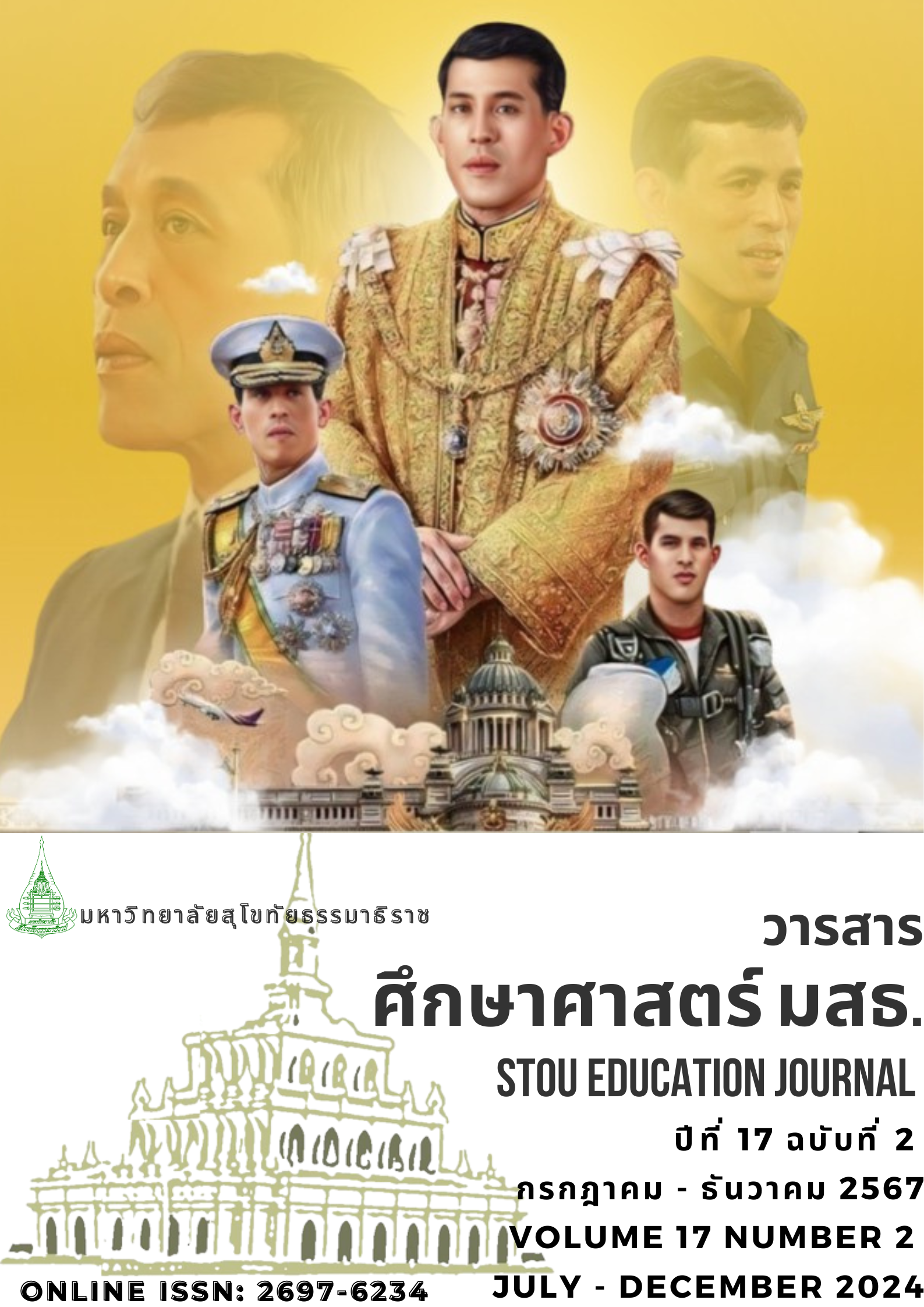The Conditions Problems and Needs for Learning Assessment in Higher Education
Main Article Content
Abstract
This research was a part of the research on the development of learning measurement and evaluation model in accordance with the teaching and learning context of higher education. The objective of this research was to study the conditions, problems, and needs of learning measurement and evaluation in higher education. There were 2 groups of research samples: The group whose data were collected with questionnaires consisted of 633 lecturers of higher education institutions across the country, both public and private, obtained by multi-step randomization. The other group whose data were collected by interviews consisted of 10 lecturers of selected higher education institutions. The questionnaire had a content validity of 0.67-1.00, with reliability coefficient of 0.96. The statistics used to analyze the data were the frequency distribution, percentage, mean, standard deviation, and needs analysis index. The interview data were analyzed with content analysis and synthesis. The results showed that both the survey results and the interview results were consistent, i.e. most learning measurement and evaluation conditions were based on measurement and evaluation principles; the problems were at the moderate level; and the needs were at the high level. The element with the highest level of needs was the implementation of measurement and evaluation results, followed by the planning and design of learning measurement and evaluation, and the determination of methods and tools for learning measurement and evaluation. The element with the needs at the lowest level was that of the implementation of learning measurement and evaluation.
Article Details
References
ปิยนันท์ สวัสดิ์ศฤงฆาร. (2562). 360 Degree Feedback and Evaluation ข้อมูลป้อนกลับและการประเมินผลแบบ 360 องศา. https://drpiyanan.com/2019/05/07/360-degree-feedback-and-evaluation/
พิชิต ฤทธิ์จรูญ. (2564). เทคนิคการวัดและประเมินผลการเรียนรู้. เพชรเกษมการพิมพ์.
รัชนียา ถิรเดโชชัย และทรงศักดิ์ ภูสีอ่อน. (2566). การศึกษาสภาพปัจจุบัน ปัญหา และแนวทางในการพัฒนารูปแบบการประเมินความสามารถ ด้านความรู้ในเนื้อหาผนวกวิธีสอนและเทคโนโลยี (TPACK) สำหรับนักศึกษาครู. วารสารสถาบันวิจัยและพัฒนา มหาวิทยาลัยราชภัฏชัยภูมิม, 5(2), 99-115.
ระบบเผยแพร่สารสนเทศอุดมศึกษา กระทรวงการอุดมศึกษา วิทยาศาสตร์ วิจัยและนวัตกรรม. (2566). info.mhesi.go.th.
ราชบัณฑิตยสถาน. (2558). พจนานุกรมศัพท์ศึกษาศาสตร์ร่วมสมัย ฉบับราชบัณฑิตยสถาน. สำนักงานราชบัณฑิตยสถาน.
Gardner, J. N. (Eds.). (2012). Assessment and learning. Sage.
Gronlund, N.E. (1998). Assessment of Student Achievement. (6th.ed). Allyn & Bacon.
Krejcie, R.V., & Morgan, D.W. (1970). google.com/search?q=ตารางเครจซี่และมอร์แกน.
Stufflebeam, D.L. (1983). “The CIPP Model for Program Evaluation”. Evaluation models: viewpoints on educational and human services evaluation. Boston: Kluwer-PNIjhoff.
Ornstein, A. C., & Hunkins, F. P. (2018). Curriculum: Foundations, principles, and issues. Boston: Pearson Education.

